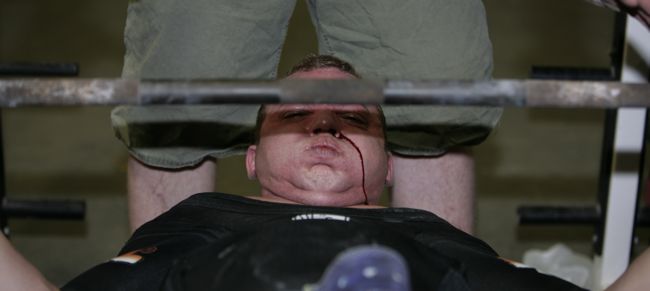
There are three ways to achieve maximum muscular tension. Louie Simmons of Westside Barbell has written quite a bit on this topic, so for further reference I suggest you Google his name. The three ways are the maximal effort method, the repeated effort method, and the dynamic method. Let’s examine the maximal effort method.
The Maximal Effort Method (ME) - Involves lifting maximal weights, generally, from one to three repetitions and using greater than 90 percent of one's 1RM. The NSCA states in the Essentials of Strength and Conditioning that minimally 85 percent of an advanced trainee’s one repetition max should be used for the purpose of increasing strength.
One advantage offered by ME is the maximal number of motor units activated using it. This method elicits the greatest strength gains for intermediate and advanced trainees because you train movement patterns and not isolated muscles with this method. It is superior for building intermuscular coordination and teaches your muscles to play in concert. No better venue for that concert than the field of play! The high demands of intermuscular coordination in ME are similar to the high demands of intense intermuscular coordination that must be displayed on the field of play. Moreover, this training method even enhances intramuscular coordination.
Less Muscle Mass is gained with the ME training because of the lower rep range. This is great for athletes like sprinters looking to increase their relative strength (strength to bodyweight ratio) or wrestlers wishing to remain within a weight class. Obviously, if one wishes to bulk up as much as possible this method is not the most efficient way to do so. By using maximal effort method you force your muscles and CNS to adapt to the loads placed on them.
 If you are a competitive strength athlete, you’re outlined percentages should be based on your training max, not your competition max. Ever wonder how Bulgarian weightlifters maxed out daily? They could do this because the maxes were based off daily training maximums. They did not get emotionally excited - emotional excitement from a competition maximum can take weeks to recover. Emotional excitement does not play into a training maximum.
If you are a competitive strength athlete, you’re outlined percentages should be based on your training max, not your competition max. Ever wonder how Bulgarian weightlifters maxed out daily? They could do this because the maxes were based off daily training maximums. They did not get emotionally excited - emotional excitement from a competition maximum can take weeks to recover. Emotional excitement does not play into a training maximum.
Nothing in this world is perfect. There's a higher risk of injury when using ME.
Athletes can easily burn out their CNS when lifting above 90 percent for three weeks in a row. One can switch exercises as the Eastern European Throwers or West Side Barbell Club did. This is known as the “conjugate method,” which originated out of the old Dynamo Club in Moscow, Russia. One can also cycle-in a deload. A deload in this case would less than 70 percent total volume (sets X reps X weight).
The maximal effort method is very important in your training if you're an athlete. Your limit strength (how much force you can produce in one all-out effort) is your athletic base. This is foundational strength. Remember - don’t build your house on sandy land. You have to build your foundation on a rock! Your rock solid foundation is your ME training. Lifts over 90 percent of your 1RM should comprise less than 10 percent of total training lifts.








